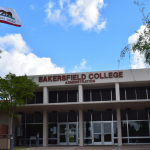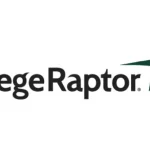AI has come to higher education, and Chatbots are coming to a college near you.
I recently had the privilege to participate in a podcast about college chatbots hosted by the New York State Financial Aid Administrators Association (NYSFAAA). The session was moderated by Howard Leslie, NYSFAAA President. We were joined by Ian Leslie, a technology innovator who also happens to be Howard’s son.
We covered a lot of ground – Chatbot 101, chatbot benefits, and why AI chatbots are quickly becoming a “must-have” for colleges. It’s a discussion that can be super helpful for school administrators looking to learn more.
My contribution to the discussion was from the perspective of a technology company that has launched nearly 200 Artificially Intelligent Chatbots for colleges over the past two years.
The key highlights of the podcast for me:
1. What is a Chatbot?
Since the technology is relatively new, we started with a simple description. I like to compare a chatbot to “live chat” (which most people seem to be familiar with). The difference being there is no person on the other end when you converse with a chatbot. It’s essentially software and data. An Artificially Intelligent chatbot is software that connects Natural Language Processing (to understand a user’s intents around their questions) and Machine Learning to a knowledge base of content.
2. Why are Schools Launching Chatbots?
Specifically, we explored the transformative impact Chatbots can have on the student experience. We are seeing first hand some compelling results as students and parents can converse with their schools 24/7/365. Access expanded. Barriers down. We’re seeing about 40% of interactions taking place outside of normal business hours.
Over the past two years, we have observed how the school chatbots have gotten a lot smarter. This is translating into better and better responses and better conversations with students. The result is better engagement. Engagement so often is the leading indicator for enrollment and retention. Chatbots can make a big impact here.
3. Do Schools Fear Being Left Behind Without a Chatbot?
During the podcast, we addressed whether website users over time will expect to communicate with a chatbot rather than searching for information. My take: some will, some won’t. But I suspect the trend will be toward “more bot”. And we are in a phase right now where there is a tremendous amount of learning going on from all sides. The Chatbots are learning. Student and parent communication preferences are evolving. And schools are learning how they can harness this technology to maximize the benefit for their students, the staff and the institution.
4. Challenges Around Chatbot Content Maintenance.
I am reminded of the old adage: content is king. Without proper maintenance, a Chatbot won’t be effective. And there is also a specific challenge around languages other than English, especially Spanish. Pure “automated translation” is insufficient, in my opinion. I noted how, at Ocelot, we have trained out Chatbot platform in Spanish to be 100% consistent with the U.S. Department of Education Spanish-language guidelines. As a result, we are seeing great scores from the Independent Chatbot scoring system. So much of a chatbot’s success will hinge on the quality of the content behind it and the ability of the AI to decipher a student’s intent so that it can direct students to the right answer or resource.
5. Chatbot Data Security and Privacy Considerations.
This is an important issue. In our experience, we are seeing a range of interest around Chatbot “integrations” into sensitive data sources such as Student Information Systems, such as Banner, PeopleSoft, WorkDay, etc. and Customer Relationship Management tools such as Slate and SalesForce. Some schools are keen to tap into these sources in order to drive a fully “personalized” experience. Imagine a specific answer to a specific question such as “When will I receive my refund?”. Other schools are much more cautious. Even within institutions, we see a range of perspectives. In my experience, the cautious-minded are waiting for the Chatbots first to get smarter through the “anonymous” experience, and are open to integrations down the road.
I appreciate NYSFAAA and President Leslie for taking a leadership role around Artificial Intelligence and Chatbots, and for including me in this productive discussion. It is important that schools learn about this new technology. The reality is that AI is here, all around us. It is emerging across so many industries. It has a natural home in higher education. Students are naturally curious about new technologies like Chatbots and AI. Indeed, students expect their schools to use them.















